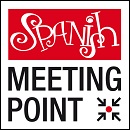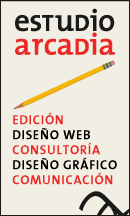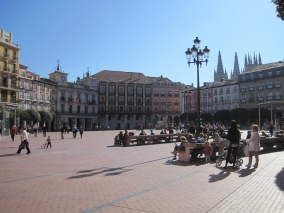Spanish schools and accommodation to study Spanish in Spain
Recent posts
Last schools
introduced
introduced
3 Accommodation

1 Spanish schools

Learning Spanish in Burgos. The tourist guide to study your Spanish course.
General Information. 180,000 inhabitants. 245 kilometres to the north of Madrid. It belongs to the Autonomous Community of Castile and León. There is some evidence of a pre-existing Neolithic settlement, but the city that we know today was founded by the Asturian, Diego "The Piglet" Rodríguez in 884. There is an architectural set of medieval-looking buildings which includes churches, arches, houses and squares. This area is called Las Llanas and is popular at weekends with young people and students. Burgos University (UBU) was created in 1994, although it was Alfonso VIII who founded the campus in 1195. Burgos is one of the cities on the Camino de Santiago, the pilgrim trail to Santiago de Compostela. Burgos is a very attractive place to study Spanish with many language schools offering a wide range of courses.
Surrounding Areas. Burgos is located at the very heart of medieval Spain's old Castile, so that any trip around the surrounding villages is sure to be an attractive and enriching experience.
Common Heritage of Mankind. The Cathedral of Saint Mary the Elder (Catedral de Santa María la Mayor), built in a pure Gothic style in 1260 and the Sierra de Atapuerca (24 kilometres), with its important archaeological sites.
Main Sights. As well as the Cathedral, it is also worth highlighting: el Monasterio deSanta María la Real de Las Huelgas and the Carthusian Monastery of Miraflores (la Cartuja de Miraflores); the Church of Saint Stephen; the Church of Saint Nicholas of Bari; the Arch of Saint Mary, one of twelve entrance gates to Burgos in the Middle Ages; town squares such as the Mercado Menor and the Mercado Mayor opposite the Casa del Cordón. You can also enjoy a quiet afternoon walk along the Paseo de la Isla, which runs alongside the Arlanzón River. Another walk, however, the Paseo del Espolón, would be a livelier option for a holiday afternoon stroll. The monuments are a major attraction for the many students who decide to study Spanish in Burgos.
Culture. There are numerous museums such as the Burgos Museum, formerly known as the Provincial Archaeological Museum; the Museum of Medieval Textiles (Museo de Telas Medievales); the Altarpiece Museum (Museo del Retablo ), where you will find 15th and 16th century altarpieces; the Caja de Burgos Contemporary Art Centre and the Military Museum.
Shopping. You will find traditional shops in the old quarter near the Cathedral and the Plaza Mayor. The best streets for fashion shops in Burgos are Santander, la Moneda, Vitoria, las Bernardas and Gamonal. Similar boutiques can also be found in the Mirador and Camino de la Plata shopping centres. Typical food products can be bought in any of the city's markets, North Market, South Market, or the G-9.
Gastronomy. The busiest and most popular areas to try tapas in Burgos are around the Plaza Mayor, such as Calle San Lorenzo and Calle Sombrerería. Among the many typical local dishes, special mention should be made of the roast lamb, sopa castellana (a garlic and bread soup), the olla podrida (a stew containing white beans and a variety of pork cuts), cheese and black pudding. Almost all of the restaurants have their own old-style firewood oven for preparing lamb roasts.
Sports. Burgos Football Club's stadium, El Plantío, has a capacity of 12,000. There are sports clubs where you can try or learn athletics, basketball, tennis, swimming, fencing and water polo.
Fiestas. The most important fiestas in Burgos are the Saint Peter and Saint Paul (San Pedro y San Pablo) celebrations, and the most important day is 29th June. Curpillos is a very old fiesta which is celebrated on the first Friday after Corpus Christi with a procession and a romería (a religious pilgrimage). And finally there is the romería of the White Virgin, which takes place on the last weekend of May.
Transport. There is a tourist train, called the Chu-chú, which has two routes, one during the day and one at night. It runs throughout the year except during January and February. It is easy to get from Burgos to other Spanish cities by train or by using the various coach services.
Nightlife. Students who decide to study Spanish in Burgos will discover a very active nightlife. The area surrounded by the Cathedral, Calle Laín Calvo and the city wall is known as Las Llanas and is one of the busiest hotspots at the weekend. Another area called Las Bernardas offers a full range of bars, pubs and clubs and a variety of late-night atmospheres.
Surrounding Areas. Burgos is located at the very heart of medieval Spain's old Castile, so that any trip around the surrounding villages is sure to be an attractive and enriching experience.
Common Heritage of Mankind. The Cathedral of Saint Mary the Elder (Catedral de Santa María la Mayor), built in a pure Gothic style in 1260 and the Sierra de Atapuerca (24 kilometres), with its important archaeological sites.
Main Sights. As well as the Cathedral, it is also worth highlighting: el Monasterio deSanta María la Real de Las Huelgas and the Carthusian Monastery of Miraflores (la Cartuja de Miraflores); the Church of Saint Stephen; the Church of Saint Nicholas of Bari; the Arch of Saint Mary, one of twelve entrance gates to Burgos in the Middle Ages; town squares such as the Mercado Menor and the Mercado Mayor opposite the Casa del Cordón. You can also enjoy a quiet afternoon walk along the Paseo de la Isla, which runs alongside the Arlanzón River. Another walk, however, the Paseo del Espolón, would be a livelier option for a holiday afternoon stroll. The monuments are a major attraction for the many students who decide to study Spanish in Burgos.
Culture. There are numerous museums such as the Burgos Museum, formerly known as the Provincial Archaeological Museum; the Museum of Medieval Textiles (Museo de Telas Medievales); the Altarpiece Museum (Museo del Retablo ), where you will find 15th and 16th century altarpieces; the Caja de Burgos Contemporary Art Centre and the Military Museum.
Shopping. You will find traditional shops in the old quarter near the Cathedral and the Plaza Mayor. The best streets for fashion shops in Burgos are Santander, la Moneda, Vitoria, las Bernardas and Gamonal. Similar boutiques can also be found in the Mirador and Camino de la Plata shopping centres. Typical food products can be bought in any of the city's markets, North Market, South Market, or the G-9.
Gastronomy. The busiest and most popular areas to try tapas in Burgos are around the Plaza Mayor, such as Calle San Lorenzo and Calle Sombrerería. Among the many typical local dishes, special mention should be made of the roast lamb, sopa castellana (a garlic and bread soup), the olla podrida (a stew containing white beans and a variety of pork cuts), cheese and black pudding. Almost all of the restaurants have their own old-style firewood oven for preparing lamb roasts.
Sports. Burgos Football Club's stadium, El Plantío, has a capacity of 12,000. There are sports clubs where you can try or learn athletics, basketball, tennis, swimming, fencing and water polo.
Fiestas. The most important fiestas in Burgos are the Saint Peter and Saint Paul (San Pedro y San Pablo) celebrations, and the most important day is 29th June. Curpillos is a very old fiesta which is celebrated on the first Friday after Corpus Christi with a procession and a romería (a religious pilgrimage). And finally there is the romería of the White Virgin, which takes place on the last weekend of May.
Transport. There is a tourist train, called the Chu-chú, which has two routes, one during the day and one at night. It runs throughout the year except during January and February. It is easy to get from Burgos to other Spanish cities by train or by using the various coach services.
Nightlife. Students who decide to study Spanish in Burgos will discover a very active nightlife. The area surrounded by the Cathedral, Calle Laín Calvo and the city wall is known as Las Llanas and is one of the busiest hotspots at the weekend. Another area called Las Bernardas offers a full range of bars, pubs and clubs and a variety of late-night atmospheres.
© TEXT: SPANISH IN TOUR.
VIDEO: Patronato de Turismo de Burgos
VIDEO: Patronato de Turismo de Burgos























